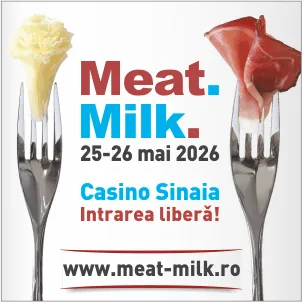1396

EU Auditors Highlight Significant Risks of Abuse
If controls are weak, Member States cannot ensure the correct collection of VAT due. The EU’s regulatory framework contains gaps and inconsistencies, and cooperation to combat abuses remains a fragile barrier.
When simplified customs import procedures are used, the EU’s financial interests and the single market are not sufficiently protected against VAT fraud on imports. This is the conclusion of a new report from the European Court of Auditors. Member State controls show serious shortcomings, and cooperation at EU level and between Member States aimed at combating abuse of these procedures is also inadequate.
For imported goods, VAT is due upon entry into the EU customs union. The tax amount is based on customs declarations. Fraud committed by traders who "manipulate" VAT on imports distorts competition within the single market and undermines the finances of both the EU and its Member States.
Auditors found that simplified customs import procedures (details below, in the “Background Information” section) are a gateway to such fraud.
"Existing measures are not sufficient to prevent and detect VAT fraud on imports when simplified customs procedures are used. The value of goods imported under these regimes is high, and the risk of abuse through fraudulent practices is significant," said Mr. François-Roger Cazala, the Court member responsible for the audit. "A proper balance must be maintained between facilitating trade and protecting the EU’s financial interests."
Auditors identified gaps and inconsistencies in the EU’s regulatory framework for simplified customs import procedures, as well as shortcomings in the European Commission’s monitoring of this framework.
They recommend the introduction and enforcement of harmonized rules. Currently, such rules do not exist, for instance, for regulating the role of fiscal representatives. In the EU countries visited by the auditors, they observed divergent approaches to invalidating VAT registration codes and inconsistencies between VAT code statuses and the statuses of the Economic Operators Registration and Identification (EORI) numbers.
In other words, operators who do not comply with VAT rules can still carry out customs operations. Furthermore, penalties vary widely from one Member State to another.
Serious gaps were also observed in national controls over simplified VAT import procedures. In the sample of imports examined, auditors uncovered significant VAT losses.
They were unable to obtain assurance that goods were transported from the importing Member State to another Member State for sale there — even though this is one of the required conditions for VAT exemption on imports into the EU.
Auditors conclude that proof of transport for such goods should be required at the time of import. They also uncovered cases where importers undervalued goods (typically smartphones, textiles, footwear, and jewelry), thus declaring a lower VAT value.
Because access to data is limited, comparing the taxable base of imported goods (customs declarations) with that of goods sold in various Member States becomes a real obstacle course.
Nevertheless, any significant — and thus suspicious — discrepancy between these taxable amounts should be investigated. Several legislative proposals aim to address some of the deficiencies identified by the auditors, but they warn that the risk of abuse will not disappear.
The Court also observed that cooperation between Member States and at the EU level is far from flawless. In particular, the mechanisms used can be time-consuming and ineffective in combating abuses.
Despite recommendations made during previous audits, data exchange — especially between tax and customs authorities of different Member States — remains a squeaky cog in the mechanism.
Background Information
According to the auditors, two simplified procedures applicable to VAT on imports present a significant risk of abuse (the Commission estimates the value of goods imported under these procedures between 2021 and 2023 at approximately €260 billion).
The first, "Release for Free Circulation – Customs Procedure 42," allows VAT exemption for goods imported from third countries into one EU Member State but intended for sale in another Member State.
The second procedure grants a VAT exemption for goods imported into the EU from third countries under a special regime for e-commerce known as the "Import One-Stop Shop" (IOSS).





